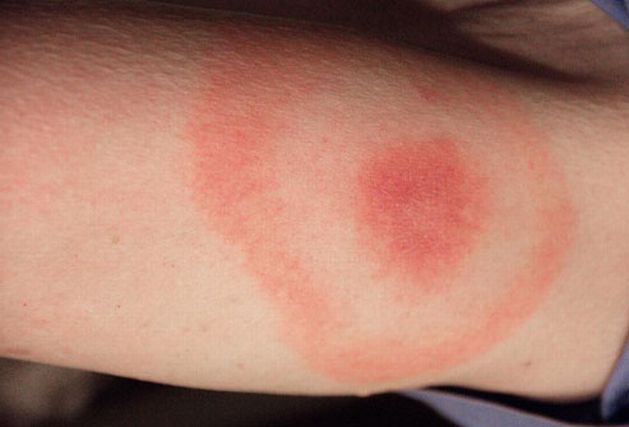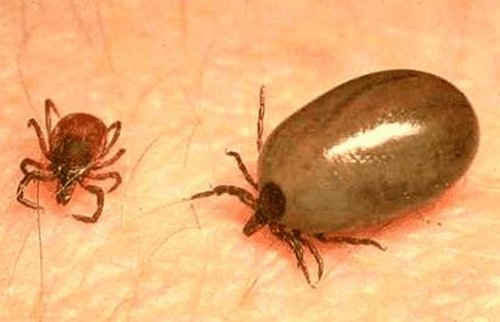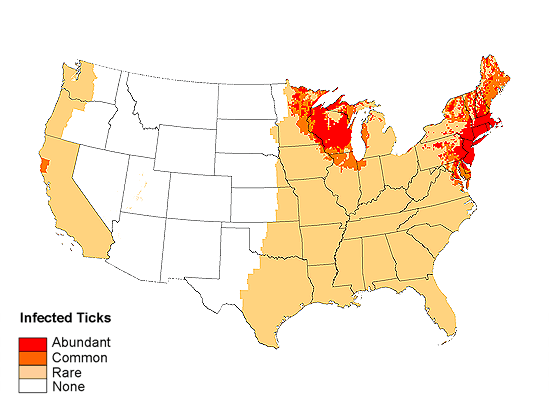Lyme disease is the quintessential Multi-Infection Syndrome (MIS). Having been around for some time and studied by many in both the allopathic and holistic fields, we can now say with certainty that Lyme disease manifests differently depending on which types of pathogenic micro-organisms are present.
You see, like many of these New Millennium Maladies, Lyme disease (LD) can show up with a number of different symptoms, depending on the many different co-factors involved and which precise microbial cocktail* happens to be the one which found a nice ‘home’ in the conducive bio-terrain.
*A microbial cocktail refers to the multiple pathogenic micro-organisms which constitute a syndrome like Lyme disease, each triggering particular phases of the disease process. These ‘cocktails’ often contain various components such a bacteria, virus, fungus, parasite and mycoplasma and can occur in various combinations.
For example, Lyme disease is known to have the following multiple infections co-existing at one time, or manifesting over the evolution of the syndrome. It’s important to note that all of these pathogenic micro-organisms may be present in the same individual; likewise, only the Lyme borreliosis may be found for one who suffers from Lyme disease. Each case of LD is different and will often present symptoms which are both similar to and diverging from the established LD clinical profile.
1) “Lyme borreliosis is an emerging infectious disease caused by at least three species of bacteria belonging to the genus Borrelia. Borrelia burgdorferi sensu stricto is the main cause of Lyme disease in North America, whereas Borrelia afzelii and Borrelia garinii cause most European cases.”
(Per Wikipedia.org)2) “Bartonella – The Gram-negative bacterial genus Bartonella currently comprises roughly two dozen identified species, about half of which are known to infect humans. The evidence for ticks as vectors of Bartonella organisms is circumstantial but fairly strong. Recent studies in both the United States and Europe have found that Ixodes ticks harbor B. henselae in addition to Borrelia, Babesia and Anaplasma organisms.”
(Per columbia-lyme.org)3) “Babesiosis is an infection caused by a malaria-like parasite, also called a “piroplasm,” that infects red blood cells. Babesia microti is believed to be the most common piroplasm infecting humans, but scientists have identified over twenty piroplasms carried by ticks.”
(Per lymedisease.org)4) “Ehrlichia are small, gram-negative bacteria, round or ellipsoidal in shape. They preferentially invade mononuclear phagocytes, such as monocytes and macrophages, and in some cases neutrophils. In all of these cell types they occupy cytoplasmic vacuoles, usually in bacterial microcolonies known as morulae. Ehrlichia cycle in nature between ticks and mammals, and can cause disease in many mammalian species.”
(Per columbia-lyme.org)5) “Klebsiella is the genus name for a bacterium that is found in the intestinal, respiratory, and urogenital tracts of our body. Klebsiella pneumoniae belongs to the Enterobacteriaceae family of bacteria. It is rod shaped, non-motile, and a gram negative bacterium. The bacterium has a polysaccharide capsule that encloses it; this makes the treatment of Klebsiella pneumoniae extremely difficult, since, the capsule provides the bacteria with resistance to most anti-biotics.”
(Per www.klebsiellapneumoniae.org)6) Mycoplasma fermentans – “Mycloplasma Fermentans is a common co-infection with Lyme Disease. Over 95% of people with Lyme disease are infected with other diseases at the same time as they are infected with the bacteria that causes Lyme Disease. These coinfections complicate the diagnosis and treatment of Lyme Disease. A useful co-infection symptom chart is available to compare the various co-infections – you can view it here ––>
http://www.lyme-symptoms.com/LymeCoinfectionChart.html.”
(Per Lyme Disease Association of Australia)
For anyone who has been medically diagnosed with Lyme disease, it’s very important to understand this critical aspect. That the micro-organism profiles of Lyme disease can differ appreciably, just as the symptoms can vary widely. Likewise, that the numerous co-factors can also be different when comparing the histories of those infected. Therefore, the treatment plan must take into the consideration these two significant issues if the individual is to experience a cure. More than any other MIS, Lyme seems to be the one where one shoe certainly does not fit everyone.
If you have decided to treat your case Lyme disease on your own, focusing on holistic methods, then please be aware that there are certain ways to address this MIS which can only assist in your FULL recovery, regardless of the mix of pathogens present or operative risk factors. What follows is a general blueprint which anyone can use with great effect. Doing so, however, does require two thing in particular: (i) keen observation of your own body, lifestyle and contribution to the disease process (ii) taking full responsibility for both the state you find yourself in, as well as for your healing process all the way back wholeness.
Multi-Infection Syndromes: Scourge Of The New Millennium
For those who have opted for this approach, we have listed below some essential points about all Multi-Infection Syndromes, which you ought to know at the outset. Being cognizant of these common denominators will assist you in paving your own unique road to a full recovery. As follows:
All you really need to know is that this entire disease process [Lyme disease] can easily be mapped out by those who have the right knowledge. The step-by-step breakdown is as follows:
(1) Toxic contamination of the local environment in the body occurs under the radar for an extended period of time
(2) Pathogenic micro-organisms pile on one after another in the same area over years of neglect and assume a subclinical profile
(3) The localized site evolves into a full-blown breeding ground, experiencing more toxic accumulation and unaddressed infection before becoming systemic
(4) A co-infection then often develops into an intractable multi-infection syndrome which may include bacterial, viral, fungal, parasitical or mycoplasma components
(5) What started out as a single toxicity in a signature point morphs into a systemic multi-infection syndrome caused by “hypertoxicity”
(6) Numerous other co-factors conspire to ensure that the syndrome moves in the wrong direction as the key risk factors elude identification
(7) Until the greatest risk factors are properly identified and addressed the individual sits (or sleeps) in a limbo of sorts until they get really sick and tire of being sick and tired.
(8) AIDS, CFS, ALS, MS, Morgellons, Lupus, Fibromyalgia, Lyme, Duchenne MD, Huntington’s disease, etc. are examples of multi-infection syndrome
(9) Many of these syndromes can and do co-exist in the same body, and therefore can elude diagnosis because so much is going on
(10) Once the body is accurately mapped out on both sides of the fence – toxins and pathogens – getting back to the destination of wellness is made easier
Each of these named diseases possesses a similar set of toxic accumulations in the body, as well as similar “microbial cocktails” which inhabit the polluted and vulnerable tissues and/or organs. Therefore it is easy to confirm exactly what you might suffer from, IF you do your homework.
To read more on this perspective, please go to the article linked below:
Multi-Infection Syndromes: Scourge Of The New Millennium
We also highly recommend that every person who had contracted the Lyme disease infection read the following page from the National Library of Medicine. Especially with Lyme, it is important to become acquainted with every aspect of the illness and each stage of its development. The more in tune one is with their body’s response, the more appropriate the chosen measures will become to effectively address the symptoms, as well as the root causes. And, yes, there is more than the one root cause we have all recognized as the bacterium spirochete known as Borrelia burgdorferi.
Lyme disease: Borreliosis; (aka Bannwarth syndrome)
LymeNet Europe has posted a very nice paper, as seen at the link below, on Lyme disease which every sufferer ought to read. Particularly for those who have eschewed the medical interventions, we might point out that, especially during the earlier stages of infection (immediately after an offending tick bite), Lyme can respond quite well to the appropriate antibiotic regimes. This is a classic case of where an “ounce of prevention is worth a pound of cure”. Once this disease process develops past a critical point of evolution, it clearly becomes more difficult to cure. And the symptoms will often exacerbate to the point where one wishes they had taken whatever preemptive measures were appropriate at the time.
We here at The Health Coach avoid pharmaceutical medications whenever possible. However, there are many times when an antibiotic is exactly what is needed. There are instances where infected individuals have successfully rid themselves of the primary Lyme pathogen and spirochete – Borrelia burgdorferi – by taking the indicated antibiotic prophylaxis. The previously referenced research paper makes a strong case for prescribing antibiotic treatment as quickly as possible after experiencing a deer tick bite from Ixodes scapularis, especially when the bite occurs in those geographic locations which have demonstrated a high density of Lyme disease infection.
We focus on this preventive approach, because of all the conflicting biomedical research studies which have been published over the past two decades or so. When this is the case, anecdotal evidence reigns supreme, so the years of feedback and input tell us that this pre-emptive measure ought to be seriously considered, especially by those with weakened immune systems and physical profiles which reveal much chronic illness.
Lyme disease, at its core, is a HUGE wakeup call.
Lyme disease, at its core, is a HUGE wakeup call. It’s all about waking us up to profound issues regarding our habits and addictions, workstyle and playstyle, emotional comportment and mental disposition. Since most who have contracted a form of this disease have similar issues, it is highly advised that an online support group be considered. Especially when support is not forthcoming from family and friends due to lack of understanding or compassion. Shared experience in this regard can be immensely helpful in ferreting out what works and doesn’t work, throughout what is often a lengthy remediation process.
Dr. Garth Nicholson was one of the very first biomedical researchers to publicly acknowledge the existence of Gulf War Syndrome back in the 1990s. Likewise, he has been way ahead of the learning curve concerning all aspects of Lyme disease. The following link takes you to an edition of Public Health Alert which features an important article written by Dr. Nicholson.
Mycoplasma – Often Overlooked In Chronic Lyme Disease
The following link teases out in much greater detail the various co-infections which can be confused with Lyme disease. This website also delineates the specific symptoms for each co-infection for those who suspect that they have a Lyme-like disease, bit lack many of the classic symptoms. For example, the mycoplasma variant described above is included in this co-infection list.
Co-infection symptoms & Lyme disease symptoms
This is the first in a series of coaching sessions on Multi-Infection Syndromes like Lyme disease. The next installment will present a very proactive approach for those who want to go way beyond eradicating just the presence of Lyme … all the way to robust health and sustained wellness.
May you enjoy great health,
The Health Coach
Health Alert:
Health Disclaimer:
All content found at The Health Coach is for information purposes only. Therefore, the information on this website is not a substitute for professional medical care and should not be construed as either medical diagnosis or treatment. All information contained herein ought to be considered within the context of an individual’s overall health status and prescribed treatment plan.
Since The Health Coach does not diagnose, treat, mitigate, cure, or heal any type of disease or medical condition, the information contained at this website is not intended to provide specific physical, mental, emotional or psychological health advice.
It is entirely the reader’s decision to act or not act on any information at The Health Coach. Therefore, we fully invoke the HOLD HARMLESS clause for those who are responsible for putting any of this information into practical use and application.
© 2012 The Health Coach
Permission is granted to post this health blog as long as it is linked back to the following url: https://thehealthcoach1.com/?p=2606



